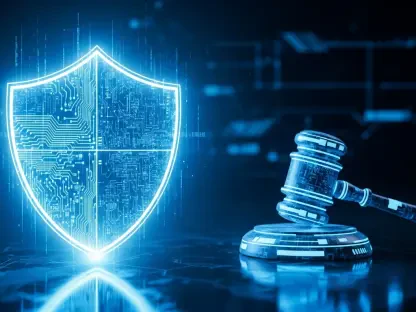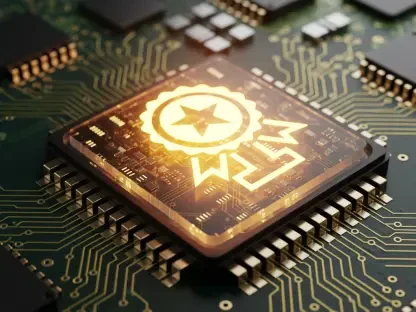In today’s hyper-connected era, the Internet of Things (IoT) has revolutionized how everyday life unfolds, seamlessly integrating technology into homes, workplaces, and public spaces through billions of devices like smart thermostats, fitness trackers, and industrial sensors. With an estimated 19.8 billion IoT devices currently active and projections suggesting this number will double by 2034, the sheer volume of personal data circulating through these networks is staggering. This connectivity, while offering unparalleled convenience and efficiency, brings with it significant privacy concerns. Sensitive information ranging from health metrics to financial records is constantly collected, often without users fully grasping the risks of exposure. As these devices become more embedded in daily routines, the potential for data breaches and misuse by malicious actors grows, making privacy protection an urgent priority. IoT governance emerges as a vital mechanism to address these challenges, establishing frameworks and standards to safeguard personal information. This discussion delves into the intricate relationship between governance and privacy, exploring how structured policies and global efforts aim to secure data in an increasingly interconnected landscape, while also looking ahead to future challenges and solutions.
Understanding the Privacy Risks of IoT
The Scale of Data Vulnerability
Escalating Numbers and Exposure Risks
The rapid proliferation of IoT devices has created a digital ecosystem where personal data is more exposed than ever before. As the number of connected devices climbs toward an anticipated 40 billion by 2034, the amount of information these gadgets collect—ranging from daily habits to critical personal details—grows exponentially. Each device, whether a smart speaker in a living room or a sensor in a factory, acts as a potential entry point for cybercriminals seeking to exploit vulnerabilities. The risk isn’t just in the volume of data but in the interconnected nature of these systems, where a breach in one device can compromise an entire network. This escalating scale of connectivity underscores why privacy protection must be prioritized, as the consequences of unchecked data exposure can affect millions of users worldwide. Without stringent measures, trust in IoT technologies could erode, hindering their adoption and benefits.
Impact of Breached Sensitive Information
Beyond the sheer numbers, the type of data at stake amplifies the gravity of privacy risks in IoT environments. Devices often handle highly confidential information, such as medical histories from wearable health monitors or banking details from smart payment systems. Unauthorized access to such data can lead to devastating outcomes, including identity theft, financial fraud, or even personal safety threats if location data is misused. The implications extend to emotional distress and loss of trust in technology providers, as individuals grapple with the fallout of having their most private information exposed. Unlike traditional data breaches, IoT incidents can be harder to detect due to the subtle, continuous nature of data collection. Addressing these vulnerabilities requires more than just technical fixes; it demands a comprehensive approach to ensure that sensitive information remains secure across diverse applications and platforms.
The Consequences of Neglect
Financial and Legal Repercussions
Failing to prioritize privacy in IoT systems can result in severe financial and legal consequences for organizations. Noncompliance with privacy regulations, such as those enforced in various regions, often leads to hefty fines that can cripple a company’s bottom line. Beyond monetary penalties, legal battles arising from data breaches consume significant resources and time, diverting focus from innovation and growth. These costs are compounded by the potential for lawsuits from affected users seeking compensation for damages. Companies found lacking in data protection measures may also face government sanctions or restrictions on their operations, further impacting profitability. The financial burden of neglecting privacy underscores the necessity of integrating robust governance into IoT strategies to avoid such pitfalls and maintain operational stability.
Erosion of User Confidence
Perhaps even more damaging than financial loss is the erosion of user confidence that follows privacy failures in IoT ecosystems. When breaches occur, users often feel betrayed by the very technologies they rely on for convenience and efficiency, leading to reluctance in adopting or continuing to use connected devices. Rebuilding trust after such incidents is a slow and challenging process, as public perception can be tarnished for years. This loss of faith not only affects individual companies but can also cast a shadow over the broader IoT industry, slowing down technological advancement. Ensuring that privacy is safeguarded through effective governance is critical to maintaining a positive relationship with users, as trust remains a cornerstone of sustained engagement with IoT innovations.
The Role of IoT Governance in Privacy Protection
Defining IoT Governance
Establishing Rules for Secure Data Handling
IoT governance serves as the backbone of privacy protection by setting clear rules and standards for how data is managed within connected networks. This encompasses policies on data collection, processing, storage, and access, ensuring that every stage of the data lifecycle is secured against potential threats. Governance frameworks aim to minimize vulnerabilities by mandating encryption, regular security updates, and strict access controls across devices and platforms. These measures are designed to thwart cybercriminals who exploit weaknesses in IoT systems, thereby protecting sensitive user information from unauthorized use. By providing a structured approach to data security, governance helps organizations navigate the complex landscape of connectivity while maintaining compliance with evolving regulations. This systematic handling of data is essential to prevent breaches that could have far-reaching consequences for both users and providers.
Fostering Confidence Through Accountability
A key objective of IoT governance is to build and sustain user confidence by promoting accountability among technology providers. When governance structures enforce transparent practices, such as clearly communicating how data is used and protected, users gain reassurance that their privacy is a priority. This trust is further reinforced by mechanisms that hold companies responsible for lapses in security, ensuring that negligence is addressed promptly. Effective governance also encourages the adoption of best practices, like conducting regular audits and risk assessments, to identify and mitigate potential threats before they escalate. By aligning security measures with user expectations, governance creates an environment where individuals feel safe engaging with IoT technologies, ultimately driving wider acceptance and innovation in the field.
Embracing a Privacy-First Mindset
Building Privacy into System Design
Adopting a privacy-first mindset means integrating data protection into the very foundation of IoT systems, rather than treating it as an optional add-on. This approach involves designing devices and applications with built-in safeguards, such as data minimization principles that limit collection to only what is necessary, and anonymization techniques that strip identifying details from datasets. Manufacturers are encouraged to embed encryption and secure authentication protocols from the outset, ensuring that privacy is not compromised for the sake of functionality or cost savings. Such proactive measures help prevent vulnerabilities that could be exploited down the line, reducing the risk of breaches. Prioritizing privacy at the design stage sets a strong precedent for responsible innovation, aligning technological advancements with the fundamental right to data protection.
Ensuring Transparency and User Control
Transparency and user control are pivotal elements of a privacy-first approach in IoT governance. Users must be informed about what data is collected, how it is used, and who has access to it, enabling them to make informed decisions about their engagement with connected devices. Clear consent mechanisms, where individuals actively agree to data practices rather than being opted in by default, are crucial for maintaining trust. Additionally, providing users with tools to manage their data—such as options to delete information or adjust privacy settings—empowers them to take charge of their digital footprint. Governance frameworks that mandate these practices ensure that organizations remain accountable, fostering an environment where privacy is respected as a core value rather than a mere compliance checkbox.
Global Efforts and Future Directions
International Standards and Legal Measures
Unified Guidelines for Cybersecurity
Global organizations play a pivotal role in shaping IoT privacy protection through the development of international standards that offer unified guidelines for cybersecurity. Bodies like the International Organization for Standardization (ISO) and the National Institute of Standards and Technology (NIST) have established benchmarks that address critical aspects of IoT security, including data encryption, device interoperability, and vulnerability management. These standards provide a common framework that manufacturers and service providers can adopt, ensuring consistency in how privacy risks are mitigated across different regions and sectors. By adhering to such guidelines, companies can better safeguard user data against evolving cyber threats, while also facilitating cross-border collaboration in technology development. This harmonized approach is vital for creating a secure IoT ecosystem that transcends geographical boundaries.
Regional Legislation and Manufacturer Responsibility
In addition to international standards, regional laws in areas like the European Union, the United States, and the United Kingdom reinforce IoT privacy by imposing strict accountability on manufacturers and service providers. Legislation often requires companies to implement security features by default, conduct regular risk assessments, and disclose breaches promptly to authorities and affected users. These mandates aim to ensure that IoT products are not only functional but also inherently safe, pushing manufacturers to prioritize privacy throughout the product lifecycle. Penalties for noncompliance serve as a deterrent, compelling organizations to invest in robust security measures. Such legal frameworks complement global standards by addressing local nuances, creating a multi-layered defense against privacy violations in the connected world.
Adapting to Emerging Challenges
Navigating Risks from New Technologies
The rapid advancement of technologies like artificial intelligence (AI) and 5G networks introduces fresh privacy challenges that IoT governance must address. AI, often integrated into IoT devices for enhanced functionality, can process vast amounts of data, raising concerns about potential misuse or unintended profiling of users. Similarly, 5G’s high-speed connectivity, while enabling real-time data transmission, increases the attack surface for cybercriminals due to the sheer volume and speed of data flow. These innovations, though transformative, necessitate updated governance strategies to counteract risks such as data interception or algorithmic bias. Staying ahead of these technological shifts requires continuous monitoring and adaptation of privacy policies to ensure that safeguards remain effective in dynamic digital environments.
Implementing Advanced Security Solutions
To tackle emerging threats, IoT governance is increasingly turning to cutting-edge security models like zero-trust architecture, which operates on the principle of never assuming trust, even within internal networks. This approach mandates continuous verification of users and devices, significantly reducing the likelihood of unauthorized access. Additionally, as connectivity evolves with technologies like 6G on the horizon, governance frameworks must incorporate scalable solutions that can handle future demands without compromising privacy. Investing in such advanced measures ensures that IoT systems are resilient against sophisticated cyberattacks, protecting user data in an era of relentless innovation. Forward-looking strategies like these are essential to maintain the delicate balance between technological progress and privacy protection.
Striking a Balance for a Secure Future
Reflecting on the journey of IoT governance, it’s evident that significant strides have been made to shield privacy amidst the expansion of connected devices. Robust frameworks and international standards have laid a foundation for securing sensitive data, while regional laws have enforced accountability among technology providers. Efforts to embed a privacy-first mindset have reshaped how systems are designed, prioritizing user trust over mere functionality. Yet, as technology evolves with AI and advanced networks, governance has adapted by integrating innovative security models to counter new threats. Looking ahead, the focus must shift toward actionable collaboration between policymakers, industry leaders, and users to refine these protections. Developing adaptive regulations that anticipate future risks, investing in user education to enhance awareness, and fostering global consensus on privacy norms are critical next steps. By maintaining this momentum, the digital landscape can evolve into a space where connectivity thrives alongside uncompromised privacy, ensuring a secure and trustworthy future for all.









